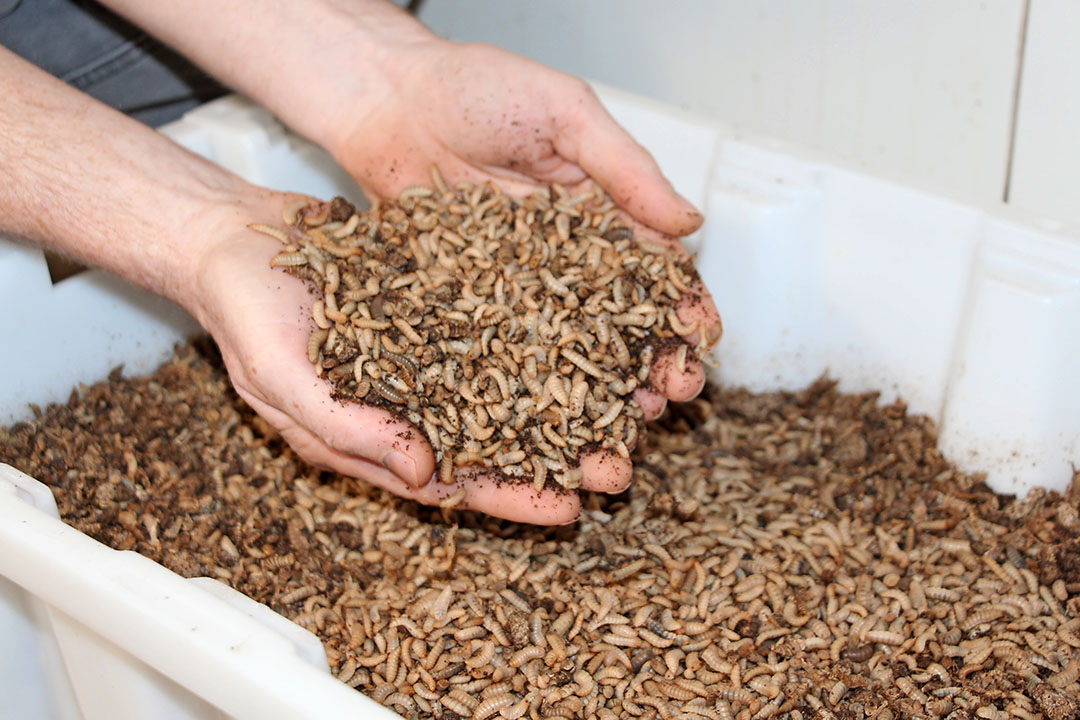Larvae meal as a fishmeal replacement for weanling piglets

Chinese researchers studied the effects of different inclusion levels of Hermetia illucens larvae meal on the growth performance, apparent nutrient digestibility, blood parameters, and gut morphology of weanling piglets.
The results of the study show that feeding 2% full-fat H. illucens larvae meal to partly replace fishmeal changed the host metabolism, immune status, and intestinal morphology of weanling piglets. These findings provide information about the potential of H. illucens larvae meal as a suitable alternative fishmeal source.
The experiment
A total of 128 weanling piglets were randomly assigned to 4 dietary treatment groups. Full-fat H. illucens larvae meal was included at increasing levels (0, 1, 2, and 4 %; HI0, HI1, HI2, and HI4, respectively) in isonitrogenous and isoenergetic diets formulated for 2 feeding phases:
- I (from day 1–14) and
- II (from day 15–28).
Each treatment consisted of 8 pens (replicates), with 4 pigs per pen. After 28 d of feeding, 8 piglets per treatment (n = 8) were slaughtered.
Insect meal:
The popularity of insect meal as a new protein has taken off – find out about new developments, regulations and innovations.
Highlights
- 2 % Hermetia illucens larvae increased the average daily gain (ADG), while decreased the feed/gain (F/G) ratio.Body weight (BW) on day 14, average daily gain (ADG) from day 1–14, and the relative weight of the liver, pancreas, and small intestine had a linear increase (P < 0.05, maximum in hi2) in response to h. illucens larvae meal consumption, while the feed gain (f g) ratio from day 1–14 exhibited a linear and quadratic decrease (p >< 0.05, minimum in hi2) in the response.>
- 2% H. illucens larvae increased total protein, IL-10, and IgA concentrations, decreased urea, and IFN-γ concentration. Linear and quadratic decreases (P < 0.05, minimum in hi4) were detected for the crude protein and crude fat digestibility. linear and quadratic (p >< 0.05, maximum in hi2) were observed for the total protein and globulin concentrations, while a linear and quadratic (p >< 0.05, minimum in hi2) effect was observed for the urea concentration. the triglyceride concentration showed a quadratic decrease (p >< 0.05, minimum in hi2) in response to h. illucens larvae meal consumption. linear and quadratic (p >< 0.01) were observed for the ifn-γ (minimum in hi4) and iga (maximum in hi2) concentrations. the hi2 diet also increased the il-10 concentration compared with hi0 group (p >< 0.05).>
- 2 % H. illucens larvae increased the villus height in the jejunum. The villus height in the jejunum of the piglets was higher in the HI2 group than in the HI0 group (P < 0.05).>
New Proteins
Find out more about some of the protein alternatives for soy that are currently seen as promising for livestock and fish diets.
This study was published in the journal Animal Feed Science and Technology











